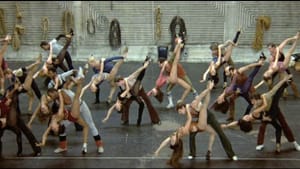Stay in the Loop
BSR publishes on a weekly schedule, with an email newsletter every Wednesday and Thursday morning. There’s no paywall, and subscribing is always free.
Since the 1930s, higher education dance programs have been educating students and livening up campus life everywhere from small liberal arts colleges to huge research universities. Each dance program has its own distinct features, brand, and alumni.
As a college dance graduate and working professional in the field, I have seen my fair share of disappointed dance majors and alums. I believe that the upset comes from a mistaken belief that college-level dance programs will do everything for their students. While this is great marketing copy, it doesn’t reflect reality. While I like to believe that higher education dance programs do their best to help the present and future journeys of their students, they cannot do all of the work alone. It is truly the responsibility of dance majors to take the lead on their own careers.
The following is my breakdown of what dance programs can and can’t do for their students. Hopefully this knowledge will provide dance majors with a sense of empowerment, clarity, and realistic expectations as they navigate through the complex world of higher education and professional dance. I also hope that this piece helps higher education dance programs to do a better job at servicing their dance majors and preparing them for diverse, 21st-century careers in the quickly changing field.
What programs can do
Higher education dance programs can do a lot of things well. They can open the minds of their students, introducing them to countless possibilities in the field. Many students tend to come to college with heavy studio training, bad habits, and a very narrow view of what constitutes good dancing.
It is the program’s responsibility to introduce students to a world beyond competition tricks. Programs have the power to provide a comprehensive curriculum that includes coursework in movement training, composition, performance, stage and film production, artistic collaboration, pedagogy, history, anatomy, research, theory, management, and entrepreneurship. Higher education dance programs also have budgets to bring in an array of talented guest artists who can teach classes, set choreography, and speak to students.
By providing these resources, the school fulfills its obligation to provide students with the diverse skill sets necessary to succeed in the real world, as well as to expose students to the many possible forms that a career in dance can take. This exposure — as well as the contacts with working professionals — can go a long way for students, especially those who are in need of career direction.
What programs can’t do
At the same time, higher education dance programs can’t promise their students a career in the field — it’s up to the students to take the reins. This may entail doing research and asking questions; seeking out special opportunities pertaining to their interests; designing or purchasing their promotional kits (website, social media pages, blog, highlight reel, résumé, bio, and photos); applying for jobs; and of course auditioning for gigs.
The real work is in transitioning from the nurturing environment of college dance programs to the competitive professional field. While higher education dance programs can help smooth this transition by teaching skills, they cannot make the magic happen for their students (as much as they may want to). The fun and exciting work of building careers lies in the hands of the powerful dance students and soon-to-be professionals.
Sign up for our newsletter
All of the week's new articles, all in one place. Sign up for the free weekly BSR newsletters, and don't miss a conversation.
